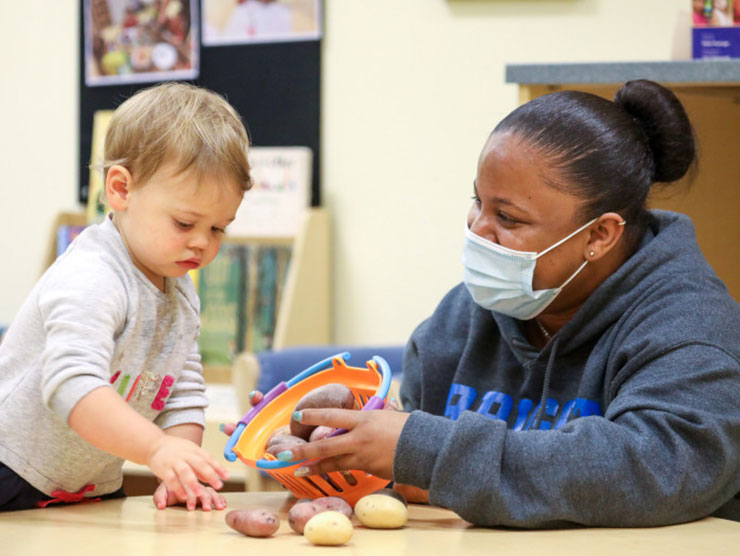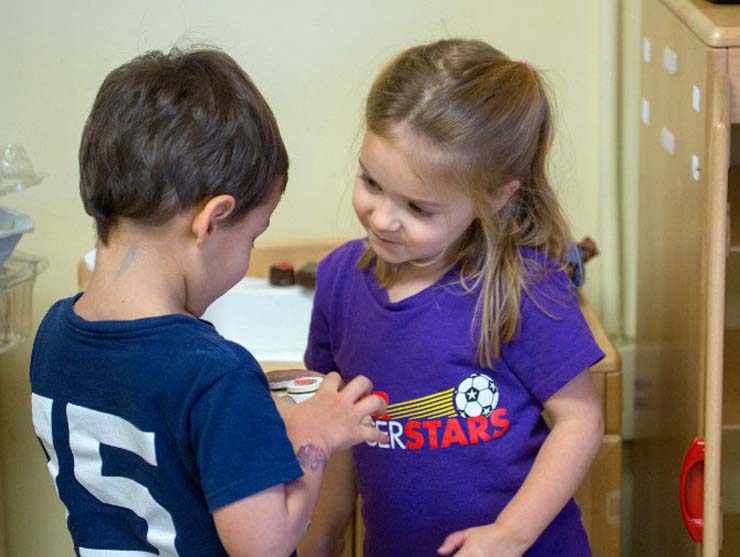In many cases, this means not only a classroom change but a transition to a new school as well. As exciting as this change may be, it can also bring anxiety.
Tips on Preparing for Kindergarten
- Plan a kindergarten visit. Visiting the new classroom or school with your child will help make preparing for kindergarten easier for him/her. Make sure you include a visit to the cafeteria, gym, playground, etc. If possible, meet with your child’s new kindergarten teacher. Some of these may be included in an orientation that the new class or school provides. But, if not, try to arrange a school visit on your own. If a visit doesn’t work with your schedule, maybe a relative or neighbor whose child attends the same school can take your child.
- Keep informed of school happenings. If you child is leaving an early childhood education program, you may find that your child’s kindergarten experience may be less personalized than your experience in child care. You will have to act as your child’s advocate in some situations. Keep informed. Read everything that comes home. Occasionally visit the school or kindergarten classroom if your work situation allows you. Knowing the school secretary, nurse, principal, etc. and introducing yourself and your child to them may also help prepare your child for kindergarten.
- Establish bedtime routines. Resume the regular bedtime routines about a month before school starts to help ease the kindergarten transition. If you let your child stay up a little later during the summer, for example, gradually get back to the bedtime you will expect when kindergarten starts. Talk to your child about why you are doing this and how it will help his/her back-to-school transition.
- Establish a morning routine. Do a “dry run” of the new morning routine, whether it is walking to the bus stop with your child, driving to the new school, walking together to the new classroom, etc. to see how much time it will take. Remember, school preparation almost always takes more time than you think, especially when the unexpected happens (you have to go back for homework, sneakers for gym, etc.).
- Plan time for breakfast. Your child may have been used to eating breakfast at preschool. If your child is transitioning to kindergarten, breakfast will not be available in many schools. Having a good breakfast before leaving for school is important. Be sure to adjust your morning schedule to account for the extra time for your child to enjoy breakfast.
- Create a lunch plan. If your child will take lunch to school, "rehearse" packing lunches in the morning. That way you will know how much extra time it will take and what lunch and snack foods you will need to have on hand. If your child will buy school lunch, begin collecting dollar bills and change. Find out how much it will cost and practice together counting out lunch money.
- Decrease or phase out naps. For preschoolers who still take a nap, begin decreasing nap time so that he/she will be ready for a full day by the time kindergarten starts.
- Make a plan for before- and after-school. Make sure you and your child know the routine for before- and after-school care if that applies. Discuss where he/she will go, how he/she will get between school and child care, how he/she will get home, etc. Have a back-up plan for what to do in case you are late. You probably had a plan for your current early childhood center, but be sure that your emergency pick-up people know where the new school or after-school program is located and what the pick-up routine is there. Better to prepare ahead of time than wait for an emergency.
- Develop a homework routine. Create a homework space where your child can do kindergarten worksheets and other homework, store papers from school, keep school supplies handy, etc. This could be an individual desk, a place in the kitchen or dining room, etc. Set an after-school or nightly schedule that includes a homework routine as well as play or “chill out” time.
- Connect with your child's teacher. Once the school year starts, it is important to give yourself and your child a chance to “bond” with the new teacher. This important part of the school transition process won’t happen instantly. In some cases, we almost need to “grieve” leaving the relationship we developed with our child’s last teacher. The new teacher may do things a little differently than your child’s former teacher. Give time for the new relationship to develop between you, your child, and the new teacher as you all adjust to a different style.
- Go shopping together for school supplies. While you may have a list that the kindergarten teacher provided, let your child choose colors or styles. There is nothing like brand new school supplies when getting ready for kindergarten!
Children's Books about Starting Kindergarten
Children's books about going to school and starting kindergarten may help prepare your child for the school transition. Here are a few of our favorite titles:
- "Curious George Goes to School" by M. Rey & H.A. Rey
- "First Day Jitters" by J. Danneberg
- "I am absolutely too small for school" by L. Child
- "I love school!" by P. Sturges & S. Halpern
- "Leo the Late Bloomer" by R. Kraus
- "Miss Bindergarten Gets Ready for Kindergarten" by J. Slate
- "Mr. George Baker" by A. Hest & J.J. Muth
- "The Kissing Hand" by A. Penn
- "Will I Have a Friend?" by M. Cohen
With a little bit of advance preparation, the transition to kindergarten can be a very positive one for parents and children. Enjoy this next stage in your child’s life and in your life as a parent.





